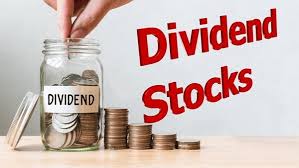An unpaid dividend is one that is due to be delivered to shareholders but has not yet been paid. Unpaid dividends exist as a result of timing inconsistencies between the record date (when current shareholders become eligible to receive the upcoming dividend) and the payment date (when the dividend is actually paid).

The Mechanisms Behind Unpaid Dividends
It is helpful to study the four important dates that are a part of the process of paying dividends in order to gain an understanding of unpaid dividends. The date of declaration, which is commonly referred to as the “announcement date,” comes first on the list. This is the day that the board of directors of the company will make the announcement on the future dividend. After this date comes the date known as the “ex-dividend date,” which is the date after which new purchasers of the stock will no longer be qualified to receive the next dividend payment.
The next significant date is called the “record date,” which is also often called the “date of record.” By this date, stockholders must be listed on the books of the corporation in order for them to be eligible to receive the next dividend. In most cases, the record date comes two days after the date on which the dividend was payable. Last but not least, the payment date refers to the day on which the dividend will be paid out to shareholders who have a record of their ownership. In most cases, the record date comes around one week after the date on which the dividend was payable.
A company will have unpaid dividends on its books between the date that they were declared and the date that the payment was made. When all of the payments have been made, any unpaid dividends will be removed from the account and canceled out.
Example of an Unpaid Dividend
XYZ Corporation is a publicly traded firm, and each share of its stock now costs $30. Because of its long history of uninterrupted dividend payments, XYZ is regarded as a reliable income-generating investment by a significant number of its shareholders. In an effort to preserve XYZ’s stellar image, the company’s upper management has decided to pay a dividend of $1.50 per share on July 30. The day that will be used for the record is going to be Thursday, August 8th. The date that the corporation will begin charging shareholders for dividends is scheduled for the 6th of August.
In this hypothetical situation, the right to collect a dividend would only be extended to owners who had purchased their shares on Monday, August 5th, or earlier than that date. The day on which payment is due can change according to the preferences of the organization, but it is always the fourth and last date on the list. Unpaid dividends will be recorded on XYZ’s books for the duration of the time that elapses between the date of the announcement on July 30 and the date on which payment is made. On the other hand, once the dividends have been distributed to shareholders, these will be removed.
Summery
- There is a discrepancy in timing between the announcement of a dividend by a firm and the actual payment of that payout, which results in the existence of unpaid dividends.
- During this period, a corporation will record on its records any dividends that have not yet been paid out, but once the dividends have been distributed, this balance will be cleared.
- It is essential for investors to have a solid understanding of the significant dates involved in the process of dividend payment in order to avoid any confusion regarding whether or not they will be eligible for a specific dividend payment.